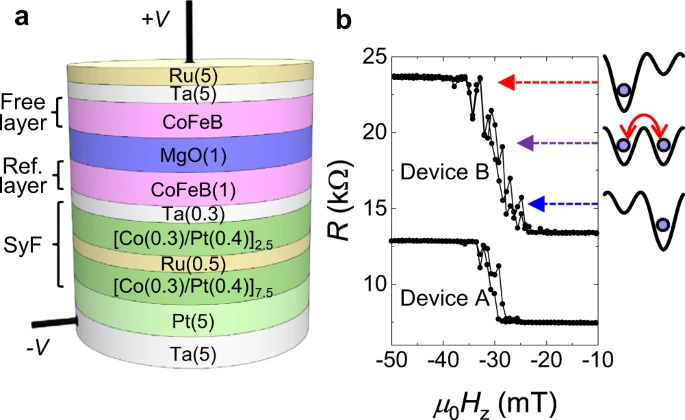Nanowerk August 29, 2022
To engineer probabilistic computers for more advanced computers researchers in Japan have developed a mathematical description to understand what happens to p-bits which could form the basis of probablistic computing. They utilized superparamagnetic tunnel junctions that have high sensitivity to external perturbations and determined the exponents through several independent measurements. They experimentally clarified the ‘switching exponent’ that governs fluctuation under the perturbations caused by magnetic field and spin-transfer torque in magnetic tunnel junctions. This gave them the mathematical foundation to implement magnetic tunnel junctions into the p-bit to sophisticatedly design probabilistic computers. They showed that these devices could be used to investigate unexplored physics related to thermally activated phenomena. The results were comprehensively described by a concept of local bifurcation observed in various physical systems. The findings demonstrated the capability of superparamagnetic tunnel junction as a useful tester for statistical physics as well as sophisticated engineering of probabilistic computing hardware with a rigorous mathematical foundation. Their findings could act as the foundation for engineering more advanced computers that can quantify uncertainty while interpreting complex data…read more. Open Access TECHNICAL ARTICLE

Sample structure and R–Hz property. Credit: Nature Communications volume 13, Article number: 4079 (2022)